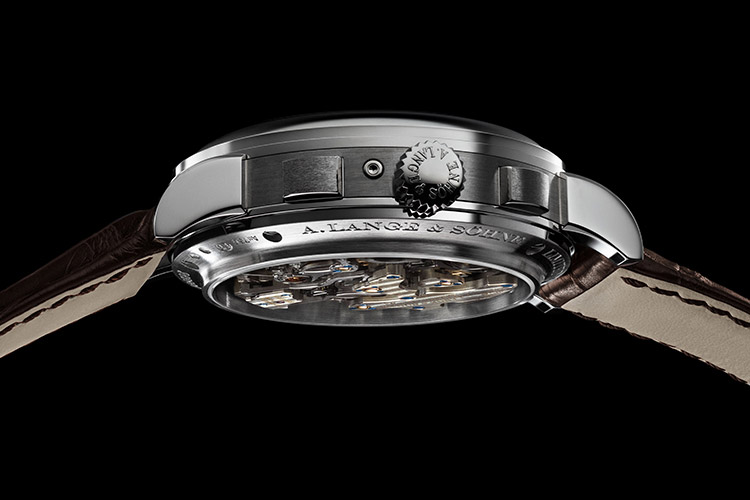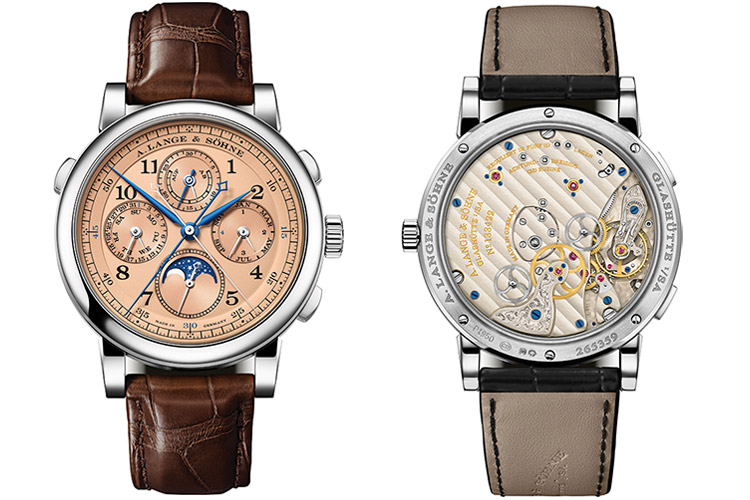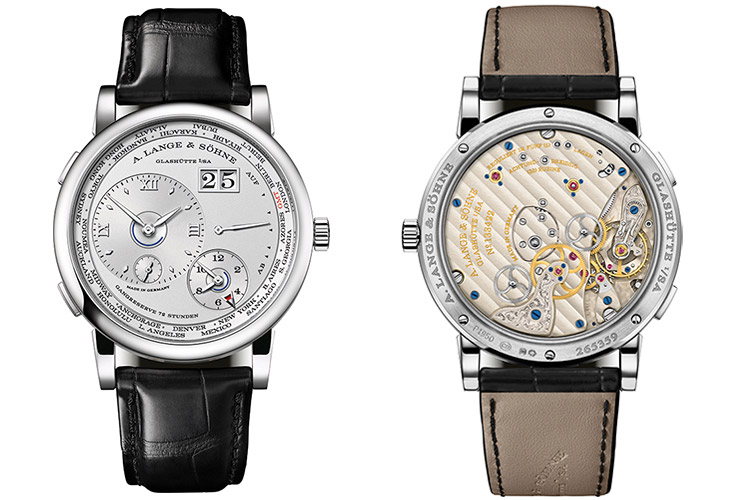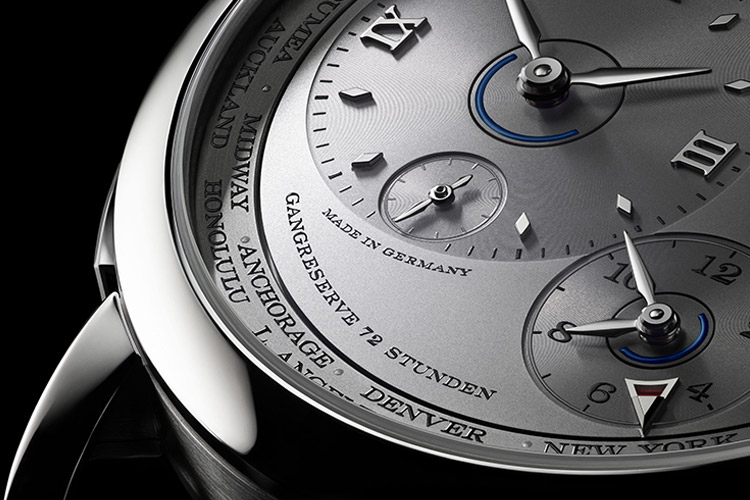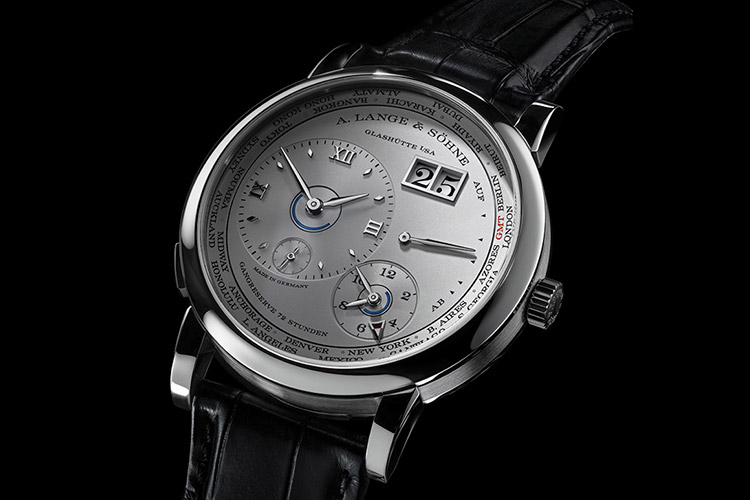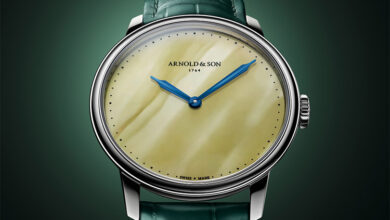A. Lange & Söhne presents new editions of two complications
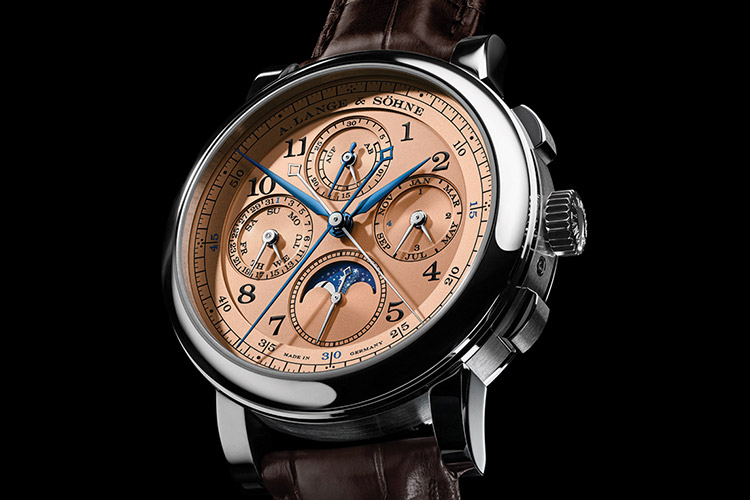
The rare and ambitious combination of a split-seconds or rattrapante chronograph with a perpetual calendar from A. Lange & Söhne now appears in a new guise, featuring an 18-carat white gold case with a pink-gold dial, and is limited to 100 pieces, while the new edition of the Lange 1 Time Zone showcases a 950-platinum case combined with a rhodium-coloured dial made of solid silver
1815 Rattrapante Perpetual Calendar
With the 1815 Rattrapante Perpetual Calendar, A. Lange & Söhne presents three of the most sophisticated watchmaking complications in a classic design. The rattrapante function of this timepiece represents one of the greatest horological challenges. In addition to the conventional functions of a chronograph, this sophisticated complication is capable of measuring intermediate times and comparative times as well as determining minimum and maximum values in the course of one minute. Since the balance wheel of the manufacture calibre L101.1 beats with six semi-oscillations per second, the stopped times can be recorded with an accuracy of one-sixth-of-a-second. High-precision readings are assured thanks to the additional graduation on the peripheral minute scale.
The precisely orchestrated proceedings within the movement can be observed through the sapphire-crystal caseback. The classic two-column wheel transmission is used to control the measurement of stopped and intermediate times. The upper surfaces of all moving parts are decorated with straight graining while the peripheral chamfers are polished.
While the rattrapante chronograph is capable of measuring different time intervals to a fraction of a second, the remarkable technical feat of the perpetual calendar lies in its “long-term memory”. As its name suggests, the complex and prescient mechanism ensures that the date, day of the week and month are correctly displayed ‒ every single day, during decades, even taking leap years into account. The calendar indications must only be corrected by one day but not until 1 March 2100; according to the rules of the Gregorian calendar, the leap year will then be skipped.
The high-precision moon-phase display has also been programmed with the long term in mind. It so closely emulates the duration of the synodic orbit of the earth’s satellite that it would take 122.6 years for the display to be corrected by one day.
Not only the technical details distinguish the watch but also the well-organised arrangement of its displays. The warm, golden hue contrasts elegantly with the cool white gold of the case and features a traditional railway-track minute scale, Arabic numerals, and the harmonious arrangement of the four subsidiary dials.
The manifold displays of the perpetual calendar and the rattrapante chronograph echo the classic aesthetics of earlier Lange pocket watches. The two pairs of combined calendar indications are arranged at 3 and 9 o’clock. The left subsidiary dial shows the date and day of the week, the right the month and leap year. Sharing an auxiliary dial with the subsidiary seconds at 6 o’clock, the moon-phase display provides an expressive colourful accent. The minute counter and power-reserve indicator are located at 12 o’clock. The shorter gold hand in the inner circle reveals when it is time to deliver new power to the movement via the winding crown. The longer hand made of blued steel imparts information about the stopped minutes.
Incorporating traditional design and engineering features, the manually wound movement L101.1 totals an impressive number of 631 individual parts. The mechanism of the perpetual calendar alone requires 211 components, a further 206 account for the rattrapante-chronograph mechanism. A screw balance, which is driven by the balance spring developed and manufactured in-house, ensures high rate stability.
The dimensions of the new 1815 Rattrapante Perpetual Calendar remain unchanged. In addition to the new model in white gold with a pink-gold dial limited to 100 pieces, the watch also comes in a platinum/argenté and pink- gold/argenté case/dial combination.
Lange 1 Time Zone
With the Lange 1 Time Zone, you literally have the world on your wrist. It displays the time at home and in another time zone at one glance. Ring-shaped day/night displays and the daylight-saving time indication for the second time zone expand the already high degree of functionality. This year, A. Lange & Söhne launches a new edition of this intuitive time-zone watch in 950 platinum with a rhodium-coloured dial.
By placing the ring with the 24 reference cities on the periphery, the harmonious display arrangement in the distinctive, off-centre dial architecture of the Lange 1 watch family is not impaired. Home time and zone time, the outsize date, and the power-reserve indicator ‒ all displays are clearly visible at any given time.
While the larger time circle indicates home time, the smaller time circle displays the time in a second time zone. When the corrector button at 8 o’clock is actuated, the city ring switches in the easterly direction by one time zone. At the same time, the hour hand in the small subsidiary dial advances by one hour and now indicates the zone time of the city ‒ and corresponding time zone ‒ at which the gold applied arrow marker points. The indication of daylight-saving time constitutes a refined technical feature. A colour segment in the arrow indicates whether the selected city and time zone implement daylight-saving time. If this is the case, the small aperture is filled in red. If standard time is observed in this location all year round, the background remains unchanged.
To distinguish between day and night in both time zones, the timepiece features coloured ring-shaped day/night indicators linked to the hour hands. They are located in the centre of each time circle and inform the wearer whether the respective time indication is valid for the first or the second half of the day. When the hour hand is in the dial-coloured area, the display refers to the interval between 6 a.m. and 6 p.m.; when the blue background appears, it refers to the interval between 6 p.m. and 6 a.m.
Additionally, the watch is endowed with an ingeniously designed synchronisation mechanism that allows the zone time to be transferred from the smaller subsidiary dial to the larger one, thus making it possible to define a new main time as home time. When the crown is pulled in the second position, the times of both zones can be adjusted synchronously. However, if the time-zone correction button is pressed and held, the hour hand of the zone-time dial will be stopped in its position. Now, the defined new main time can be set independently of the zone time. Finally, it may be necessary to correct the outsize date, which is connected with main time, by actuating the date correction button at 10 o’clock.
The heart of the Lange 1 Time Zone, the manufacture calibre L141.1, assures a power reserve of 72 hours, despite having only one mainspring barrel. Further technical details include a classic screw balance and a freely oscillating balance spring crafted in-house and calibrated for a frequency of 21,600 semi-oscillations per hour. Lange-typical quality hallmarks such as the three-quarter plate made of untreated German silver, screwed gold chatons, blued screws, an elaborate whiplash precision index adjuster as well as a balance cock and an intermediate-wheel cock ‒ both hand-engraved ‒ are visible through the sapphire-crystal caseback, as are the hand-crafted decoration of the movement.
